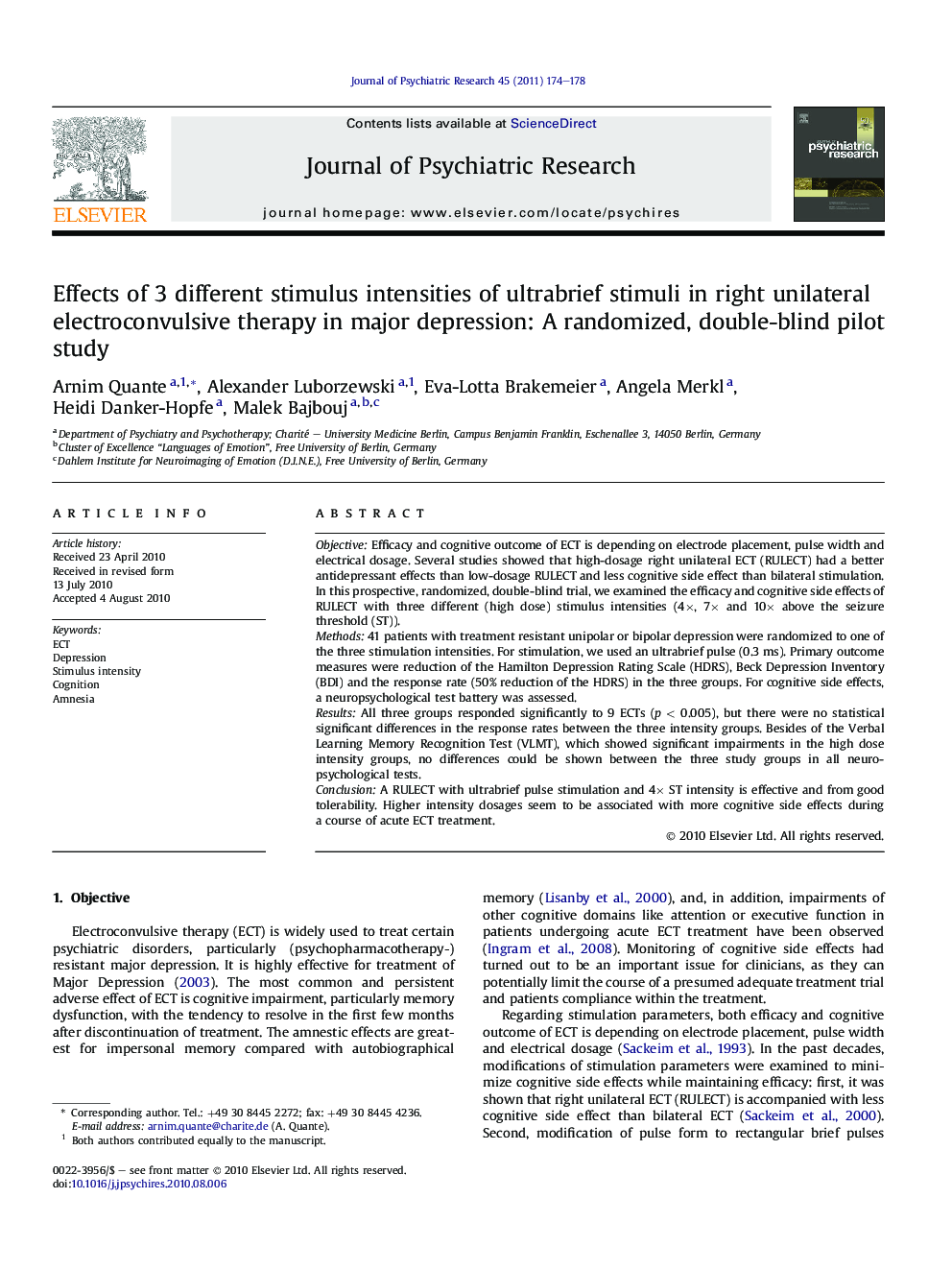| Article ID | Journal | Published Year | Pages | File Type |
|---|---|---|---|---|
| 326588 | Journal of Psychiatric Research | 2011 | 5 Pages |
ObjectiveEfficacy and cognitive outcome of ECT is depending on electrode placement, pulse width and electrical dosage. Several studies showed that high-dosage right unilateral ECT (RULECT) had a better antidepressant effects than low-dosage RULECT and less cognitive side effect than bilateral stimulation. In this prospective, randomized, double-blind trial, we examined the efficacy and cognitive side effects of RULECT with three different (high dose) stimulus intensities (4×, 7× and 10× above the seizure threshold (ST)).Methods41 patients with treatment resistant unipolar or bipolar depression were randomized to one of the three stimulation intensities. For stimulation, we used an ultrabrief pulse (0.3 ms). Primary outcome measures were reduction of the Hamilton Depression Rating Scale (HDRS), Beck Depression Inventory (BDI) and the response rate (50% reduction of the HDRS) in the three groups. For cognitive side effects, a neuropsychological test battery was assessed.ResultsAll three groups responded significantly to 9 ECTs (p < 0.005), but there were no statistical significant differences in the response rates between the three intensity groups. Besides of the Verbal Learning Memory Recognition Test (VLMT), which showed significant impairments in the high dose intensity groups, no differences could be shown between the three study groups in all neuropsychological tests.ConclusionA RULECT with ultrabrief pulse stimulation and 4× ST intensity is effective and from good tolerability. Higher intensity dosages seem to be associated with more cognitive side effects during a course of acute ECT treatment.
